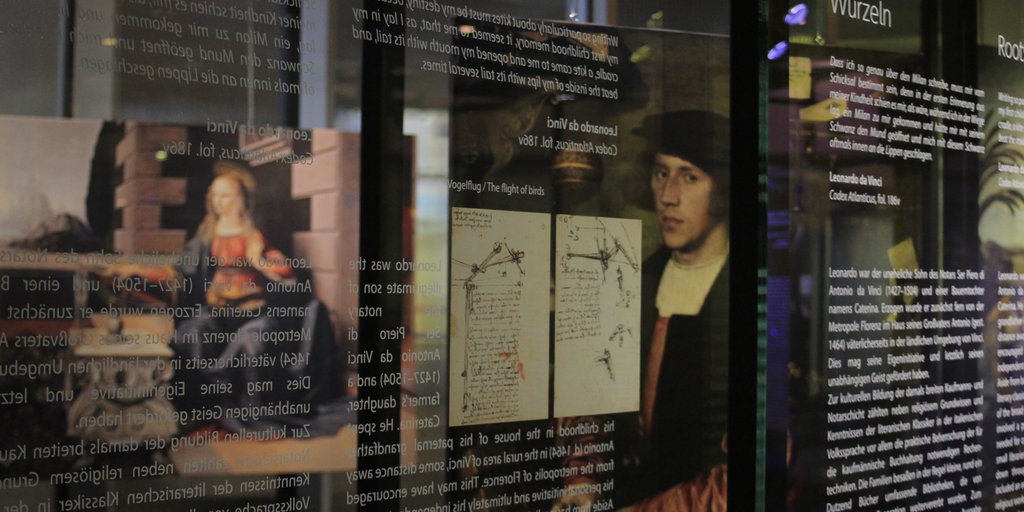
Roots <
Writing so particularly about kites must be my destiny, because in my first childhood memory, it seemed to me that, as I lay in my cradle, a kite came to me and opened my mouth with its tail, and beat the inside of my lips with its tail several times
Leonardo da Vinci
Codex Atlanticus, fol. 186v. Translation: Elizabeth Hughes
Leonardo was the illegitimate son of the notary Ser Piero di Antonio da Vinci (1427–1504) and a farmer’s daughter, Caterina. He spent his childhood in the house of his paternal grandfather Antonio (d. 1464) in the rural area of Vinci, some distance away from the metropolis of Florence. This may have encouraged his personal initiative and ultimately his independent spirit.
Aside from basic religious knowledge and familiarity with the literary classics in the Italian vernacular, the cultural education of the broad merchant and notary class at that time mainly involved a practical mastery of the arithmetic techniques needed for commercial accounting. Families usually owned small libraries of around a dozen books that were passed down through the generations. The typical collection included an edition of the Bible—often in Italian—and other religious works (collections of acts of the saints, confessionals, psalms, and sermons) as well as the vernacular classics of the literary triumvirate of Dante, Petrarch, and Boccaccio. An arithmetic book (libro d’abaco) was indispensable for reference and as a textbook for everyday mathematical tasks. Additionally, the head of the family consecutively recorded memorable events and recollections (ricordanze) in a family album. Some family members also tried their hand at writing edifying texts. Leonardo’s half-brother Lorenzo (1480–1531), a wool merchant, wrote two short religious tracts. Most of the works were still handwritten codices. Book printing was still in its infancy when Leonard was young, but this would soon change rapidly, in Italy as elsewhere.
The Early Years <
 | 17.
ca. 1472–1475 |

The young Leonardo depicted a book in the very first painting he made independently: while reading, the Virgin Mary is surprised by the archangel Gabriel, who announces she will give birth to a child. The image of Mary reading corresponds to a widespread visual tradition. The striking gesture with which the Mother of God points to a place in the manuscript text is an original idea of Leonardo’s. The manuscript is marked off according to contemporary conventions by rubrications (emphases in red script) which are not legible to the viewer but evidently refer to a verse from the book of the prophet Isaiah (7,14) in the Old Testament prophesying the birth of the Redeemer from a virgin. The picture captures the moment when Mary realizes her own predestined role in the event of salvation: the mystery of incarnation, the embodiment of the Word of God, is taking place in her womb.
References
Bambach, Carmen C. 2019. Leonardo da Vinci Rediscovered. Vol. 1: The Making of an Artist 1452–1500. 4 vols. New Haven / London: Yale University Press, 163–169.
Brown, David Alan. 1999. Leonardo da Vinci. Origins of a Genius. New Haven / London: Yale University Press, 75–99.
Delieuvin, Vincent, and Louis Frank, eds. 2019. Léonard de Vinci. Exhibition catalogue Musée du Louvre, Paris, 24.10.2019–24.2.2020. Vanves: Hazan, 72–77.








